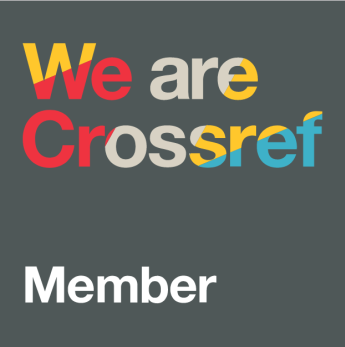Exploring the role of translanguaging in Indonesian as a foreign language: Practices and implications
DOI:
https://doi.org/10.21831/lt.v9i1.61850Keywords:
bahasa Indonesia sebagai bahasa asing, praktik dan implikasinya, translanguagingAbstract
References
Aini, Safi. (2020). An Arabic text as content in an Indonesian EFL setting: Trans-language.Indonesian TESOL Journal, [S.l.], v. 2, n. 2, p. 128-142, oct. 2020. ISSN 2622-5441. Available at: <https://ejournal.iainpalopo.ac.id/index.php/ITJ/article/view/1518>. doi:https://doi.org/10.24256/itj.v2i2.1518.
Ary, D., Jacobs, L.C., Razavieh, A., Sorensen, C. (2009). Introduction to research 8th edition. Wadsworth Publishing.
Baker, C. (2011). Foundation of bilingual education and bilingualism (5th ed). Multingual Matters.
Banks, J.A (ed). (2013). Multicultural education: Issues and perspectives. John Wiley & Sons, Inc.
Beckett, G. H., Slater, Tammy. (eds). (2020). Global perspectives on project-based language learning, teaching, and assessment: Key approaches, technology tools, and frameworks. Routledge.
Brown, H. D. (2005). Principles of language learning and teaching. Pearson Education.
Cenoz, J. & Gorter, D. (2020). Pedagogical translanguaging: An introduction. System, 92. doi: https://doi.org/10.1016/j.system.2020.102269
Conteh, J. (2019) Translanguaging. ELT Journal, 72 (4), 445-447.
Corder, P. (1992). A role for mother tongue in Susan Gass & Larry Selinker (eds), Language Transfer In Language Learning. Amsterdam: John Benjamins Publishing.
Cresswell, J. (2014). Research design: Qualitative, quantitative, and mixed methods approaches, fourth edition. Sage Publications.
Cummins, J. (1991). Beyond Adversarial Discourse: Searching for Common Ground in the Education of Bilingual Students. In The Politics of Multiculturalism and Bilingual Education: Students and Teachers Caught in the Crossfire.
Cummins, J. (2001). Bilingual education in language education. Taylor & Francis.
Dulay, H. C., Burt, M., & Krashen. (1982). Language two. Oxford University Press.
Gall, M.D., Gall, J., & Borg, W.R. (2007). Educational research: an introduction. (8th Edit) Pearson Education, Inc.
Garcia, O. (2009). Bilingual Education in the 21st Century: A Global Perspective by Ofelia García. Journal of Sociolinguistics, 13 (4), 569–573.
García, O., Bartlett, L., & Kleifgen, J. A. (2007). From biliteracy to pluriliteracies. In P. Auer & L. Wei (Eds.), Handbook of applied linguistics (vol. 5, pp. 207–228). Mouton/de gruyter.
García, O. (2013) "˜From Diglossia to Transglossia: Bilingual and Multilingual Classrooms in the 21st Century' in C. Abello-Contesse, P. Chandler, M. D. López-Jiménez, M. M. Torreblanc
R. Chacón Beltrán (eds) Bilingualism and Multilingualism in School Settings (Bristol: Multilingual Matters), pp. 155–178.
García, O., Johnson, S. & Seltzer, K. (2017). The Translanguaging Classroom. Caslon.
García, O., & Kano, N. (2014). Translanguaging as process and pedagogy: Developing the English writing of Japanese students in the US. In J. Conteh & g. Meier (Eds.), The multilingual turn in languages education: Opportunities and challenges. Multilingual Matters.
García, O., & Kleyn, T. (2016). Translanguaging with multilingual students: Learning from classroom moments. Routledge.
García-Mateus, S., & Palmer, D. (2017). Translanguaging pedagogies for positive identities in two-way dual language bilingual education. Journal of Language, Identity & Education, 16(4), 245–255.
Grant, C.A., & Portera, A (eds). (2011). Intercultural and multicultural education: Enhancing global interconnectedness. Routledge.
Hall, G., & Cook, G. (2012). Own language use in language teaching and learning. Language Teaching, 45 (3), 271-308.
Hungwe, V. (2019). Using a translanguaging approach in teaching paraphrasing to enhance reading comprehension in first year students. Reading & Writing. Vol. 10 No. 1, pp. e1-e9. https://doi.org/10.4102/rw.v10i1.216
Lado, R. (1957). Linguistics across cultures applied linguistics for language teachers. University of Michigan Press.
Li, W. (2011). Multilinguality, multimodality, and multi-competence: Code- and mode-switching by minority ethnic children in complementary schools. The Modern Language Journal, 95(3), 370–384.
Michael, S., Haibo, S. (2022). A translanguaging approach to bilingual theorising in postgraduate researcher's education. Journal of Multilingual and Multicultural Development. Routledge. Doi. 10.1080/01434632.2022.2134876
Putrawan, G.E. (2022). Translanguaging Practices in EFL Classrooms: Evidence from Indonesia. CaLLs. Vol. 8 No. 1. pp. 69-86. https://doi.org/10.30872/calls.v8i1.7973.
Rubinov, E. (2021). Making use of multilingualism at school: A pedagogy of translanguaging. МногоÑзычие в образовательном проÑтранÑтве. Vol. 13, pp. 46-47. https://doi.org/10.35634/2500-0748-2021-13-46-57
Subin, N. (2022). Translanguaging.....or trans-foreign-languaging?: A comprehensive content and language integrated learning (CLIL) teaching model. Translation and Translanguaging in Multilingual Context. Vol. 8, Issue 2, pp. 143-185.
Sugiyono. (2015). Metode penelitian dan pengembangan. Alfabeta.
Wang, D. (2019). Multilingualism and translanguaging in Chinese language
classrooms. Springer.
Wei, L., Garcia, O. (2014). Translanguaging: Language, bilingualism, and education. New York: Palgrave MacMillan.
Weinreich, U. (1979). Languages in contact. The Hague Mouton.
Zhou, X. & Mann, S. (2021). Translanguaging in a Chinese University CLIL classroom: Teacher strategies and student attitudes. Studies in Second Language Learning and Teaching (SSLLT). 11 Vol (2) pp. 265-289. http://dx.doi.org/10.14746/ssllt.2021.11.2.5
Downloads
Published
How to Cite
Issue
Section
Citation Check
License
LingTera allows readers to read, download, copy, distribute, print, search, or link to its articles' full texts and allows readers to use them for any other lawful purpose. The journal allows the author(s) to hold the copyright without restrictions. Finally, the journal allows the author(s) to retain publishing rights without restrictions.
- Authors are allowed to archive their submitted articles in an open-access repository.
- Authors are allowed to archive the final published article in an open-access repository with an acknowledgment of its initial publication in this journal.

Psychology, Evaluation, and Technology in Educational Research is licensed under a Creative Commons Attribution-ShareAlike 4.0 International License.
Based on a work at https://petier.org/index.php/PETIER.









